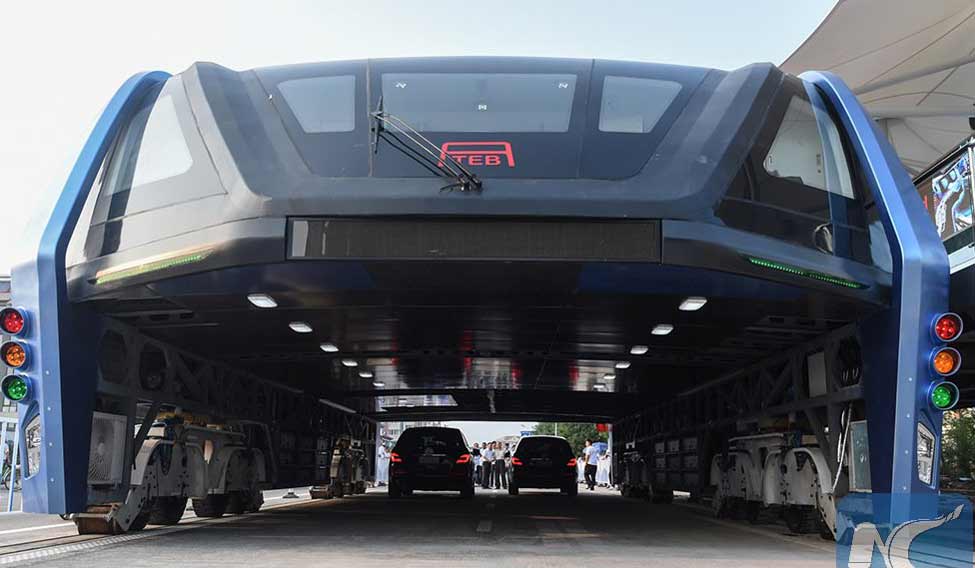China has tested a huge straddle bus, which has a revolutionary design that lets cars drive underneath and can carry up to 1,400 passengers, saving not only the road space but also reducing air pollution.
The transit elevated bus TEB-1 was on road test in Qinhuangdao, north China's Hebei Province, state-run People's Daily reported.
The bus is powered by electricity and is 22-meter-long, 7.8-meter-wide. It was tested on a specially laid track.
The pictures of the bus shows cars passing below it.
The passenger compartment of this futuristic public bus rises far above other vehicles on the road, allowing cars to pass underneath.
The design of the bus made headlines all over the world when it was released in May this year by a Chinese firm.
Also known as a land airbus, the concept was the brainchild of the Beijing-based Transit Explore Bus which displayed in the high-tech expo in the city.
The passenger compartment spans two traffic lanes and sits high above the road surface on a pair of stilts, leaving the road clear for ordinary cars to pass underneath.
Regardless of whether the bus is moving or not, cars under 2 meters high can easily pass through.
Running along special tracks, the bus can carry up to 1,400 passengers, and travel at a top speed of 60 kilometers per hour.
"The biggest advantage is that the bus will save lots of road space,"Song Youzhou, chief engineer of the straddling bus project told state-run Xinhua news agency in May this year.
He added that the bus has the similar function of the subway, but its cost is only 16 per cent of the subway. The manufacturing and construction lead-time is also much shorter.
Furthermore, the design is environmentally friendly.
Powered by electricity, the straddling bus could replace about 40 conventional buses, potentially saving more than 800 tonnes of fuel annually and reducing 2,480 tonnes of carbon emissions,Song said.
Some Chinese cities have shown interest in the invention.




